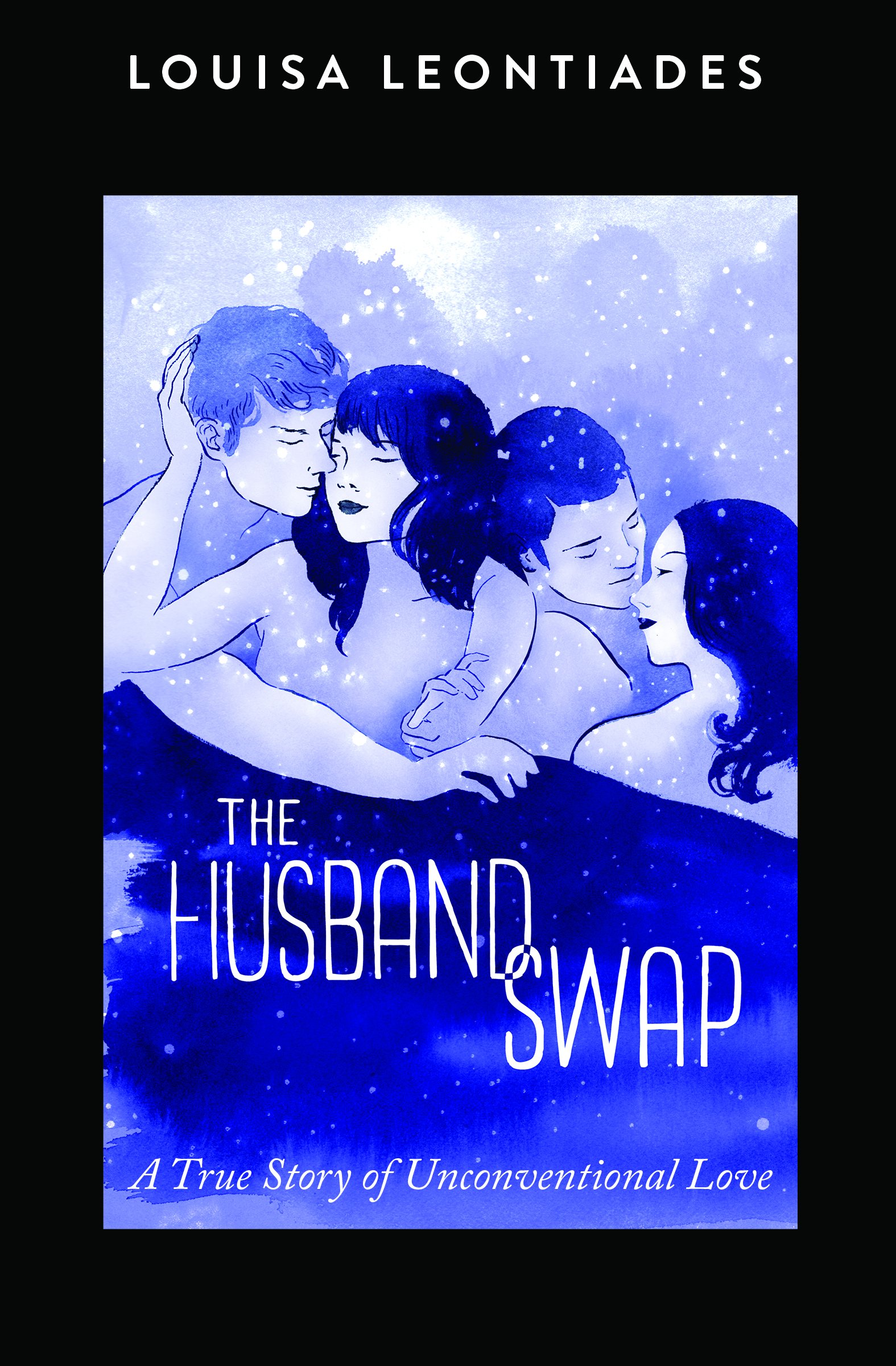
Click on cover to buy this book from Amazon.com
www.ejhs.org

Click on cover to buy this book from Amazon.com
The Husband Swap is an interesting and well-written relationship memoir. It follows the usual pattern of most relationship memoirs, in which things are going along, something happens to change the existing pattern, and events proceed to an outcome. The uniqueness of The Husband Swap is in its topic material. This book is the true story of the author's first polyamorous relationship.
Louisa and Gilles are a reasonably happy and stable couple. Looking to enhance their marriage, they seek another couple to connect with romantically. They meet Elena and Morten, and the two couples connect, both physically and emotionally. What follows is a searingly honest and utterly fascinating narrative of their deep and complex relationship as it travels its course, and the people involved deal with the joys and challenges of love and connection. This relationship involves four people but the patterns and incidents described here will resonate for readers in all types of relationships, with any number of people; interpersonal dynamics are universal. That said, those in honest multi-partner relationships will likely recognize quite a few moments, as the experiences described in this book are ones that people in many non-monagamous relationships have had.
Here, things go well at first, in fact very well indeed. In due course issues arise, as issues will in any relationship, and are handled. Then more issues arise, and some issues that had previously been handled resurface. Though the physical interactions are strictly heterosexual, the emotional relationships range between all members of the group, becoming quite complex. I've noticed for some years that the complexity of a relationship is roughly the square of the number of people involved. For example, two people must manage four "arrows of relationship" -- between A->B, B->A, and those all-important relationships with oneself A->A and B->B. Similarly, three people in a triad must juggle nine relationship arrows. To be successful, a quad such as this must keep fully sixteen separate relationships in sync, and if any one of these goes bad it can take the entire group down. Juggling so many individual relationships is, I feel, the reason successful longterm quads are relatively rare. Anyone involved in longterm multi-partner relationships has seen this. Sexual/loving partnerships of course, but also other deep relationships, such as musical groups or similar creative collaborations. Ever wonder why great bands are always breaking up? Think of them as a quad and there you go.
In this quad the sixteen relationships are certainly put to the test as these four people go through individual and collective processes of love and passion, breakup and reconciliation, discovery and self-discovery, while sorting out what they truly want and working toward their desires. Sometimes they work together, other times at cross purposes, as people will. The description of these deeply personal interactions is what gives this book its power.
And power it does have. As the story of the quad's journey unfolds, this book's well-crafted dialogue and characterizations offer solid insights into, not just these four people, and not just polyamorous people, but any of us, in any sort of relationship.
In the end their quad does not last. This is hardly a spoiler; as mentioned above, this book is a memoir of the author's first polyamorous relationship some time ago, and how did your first relationship turn out? As noted writer Noël Lynne Figart observes in the foreword, it's not so much that doing a polyamorous relationship well is hard, it's that doing any relationship well is hard.
Since then, the author has progressed in her polyamorous relationship life, quite successfully judging by the biographical notes. But this book describes her first time, and as the author discovers the joys and challenges of polyamory so does the reader, making this a good book for those wanting to learn more about polyamory. Still, the satisfactions and difficulties described here are surely mirrored in any deep alliance, so this compelling narrative of emotional growth and discovery will resonate with those in any style of relationship.
Bottom line - good book, interesting material, well-told narrative. Worth a read.
About the reviewer: Barry Smiler runs BmorePoly (BmorePoly.org), the biggest and most active poly/open relationship group in the Mid-Atlantic with over two thousand members and fifty events every month throughout the DC/MD/VA area.